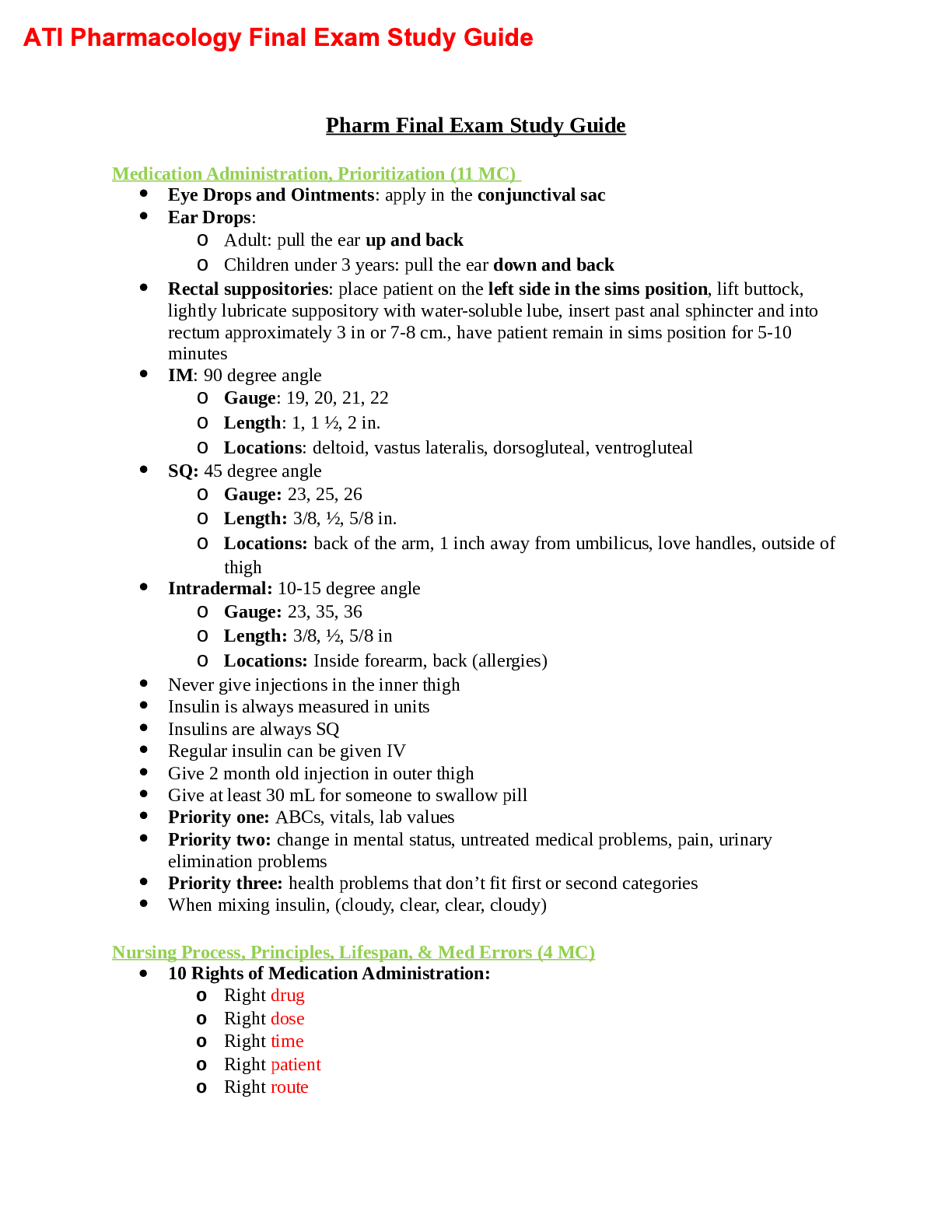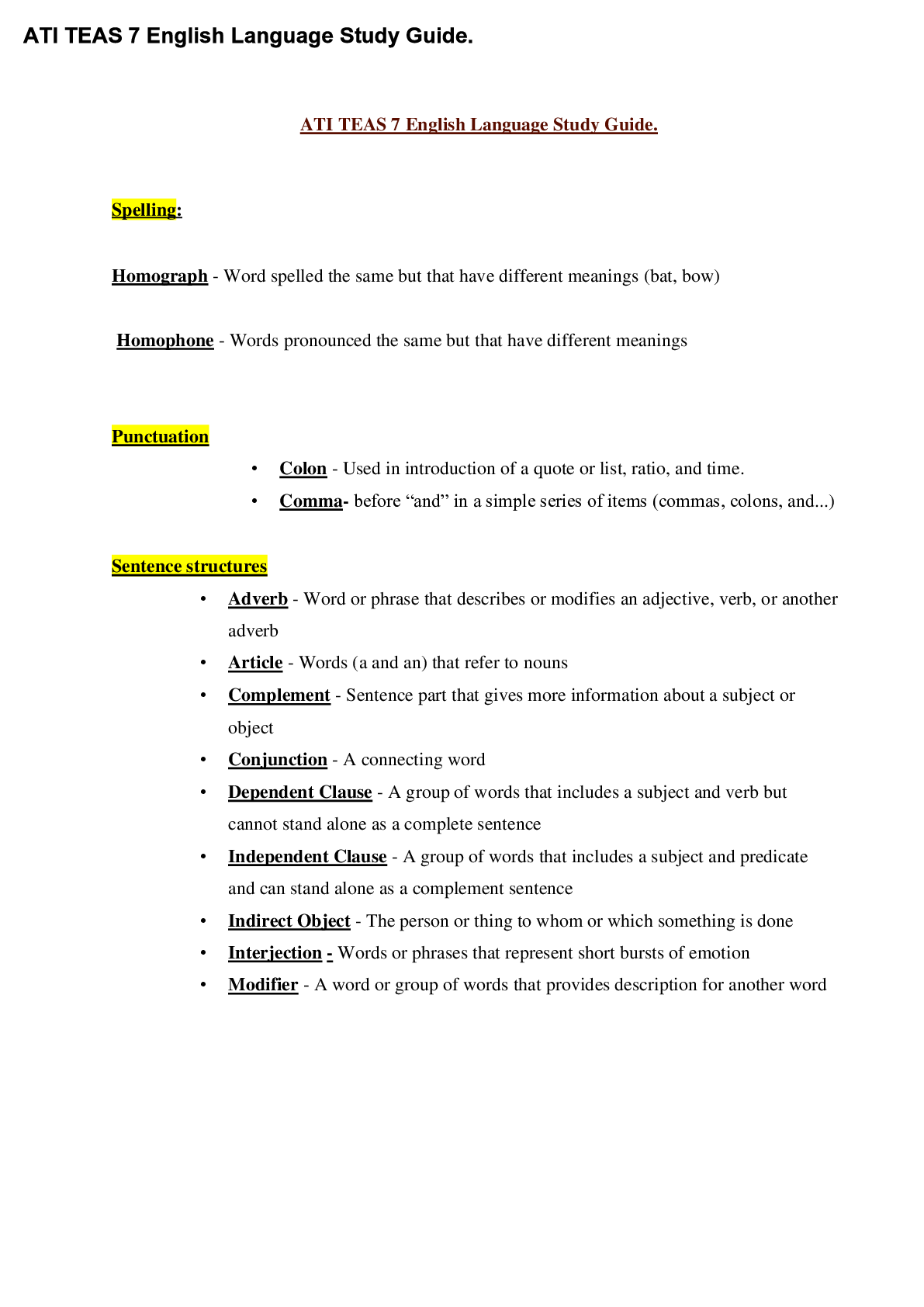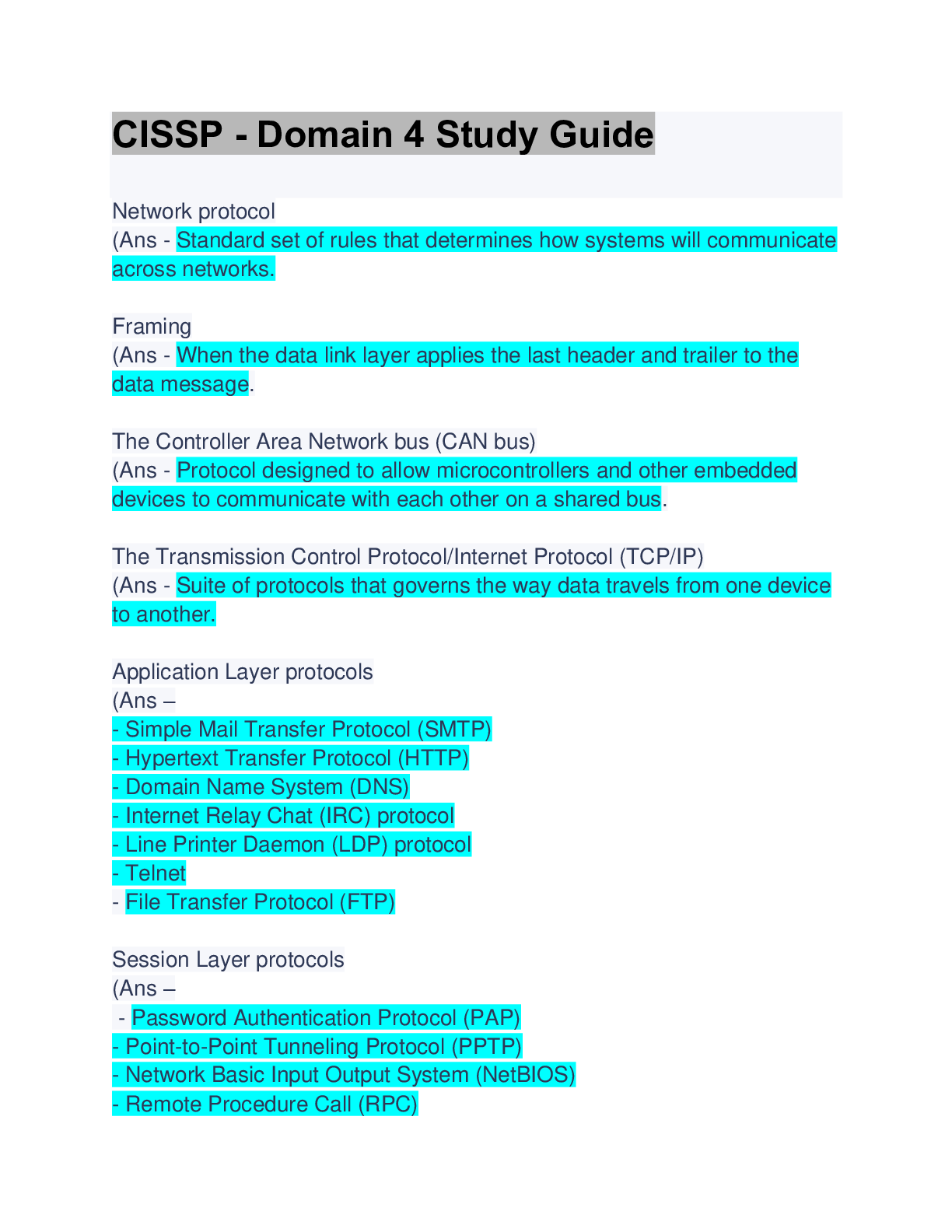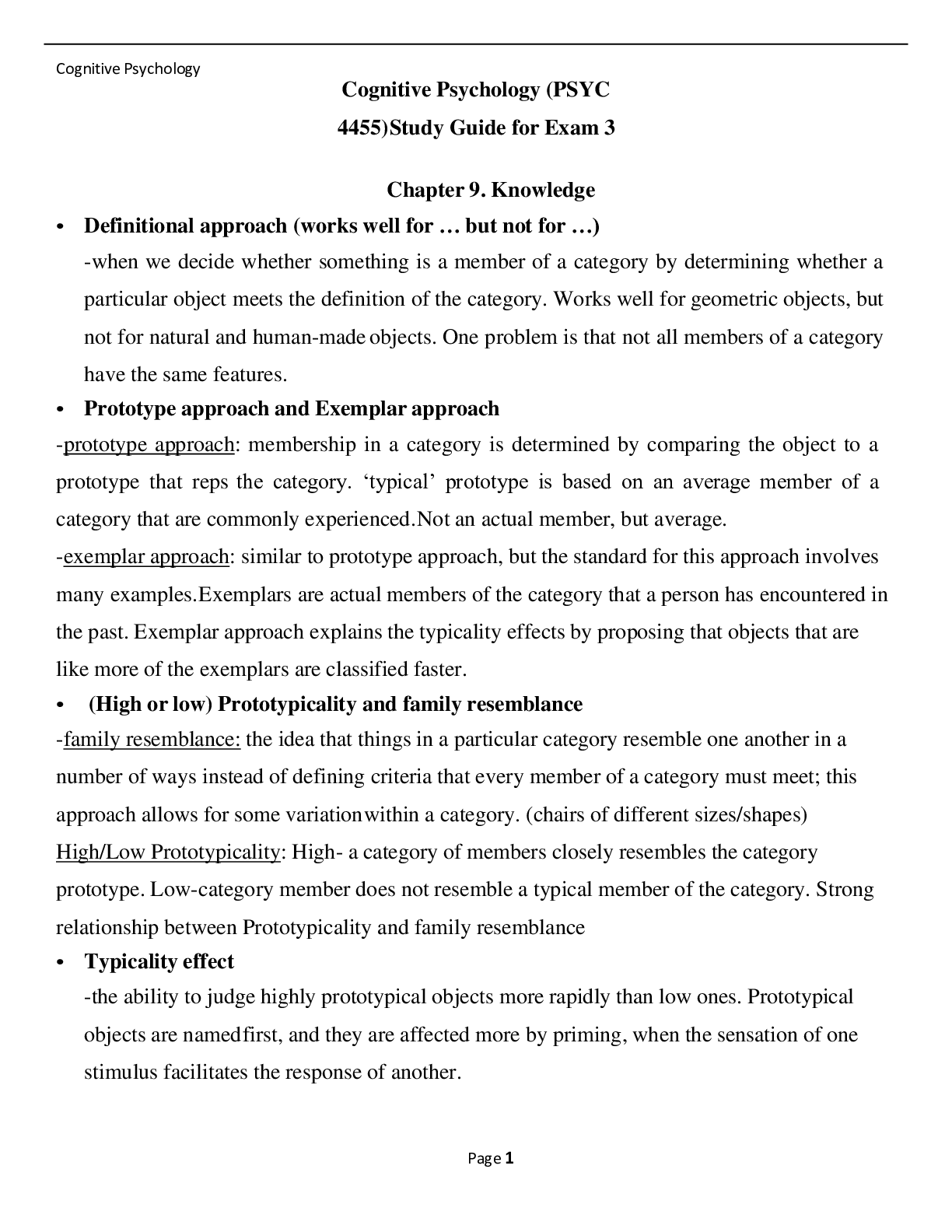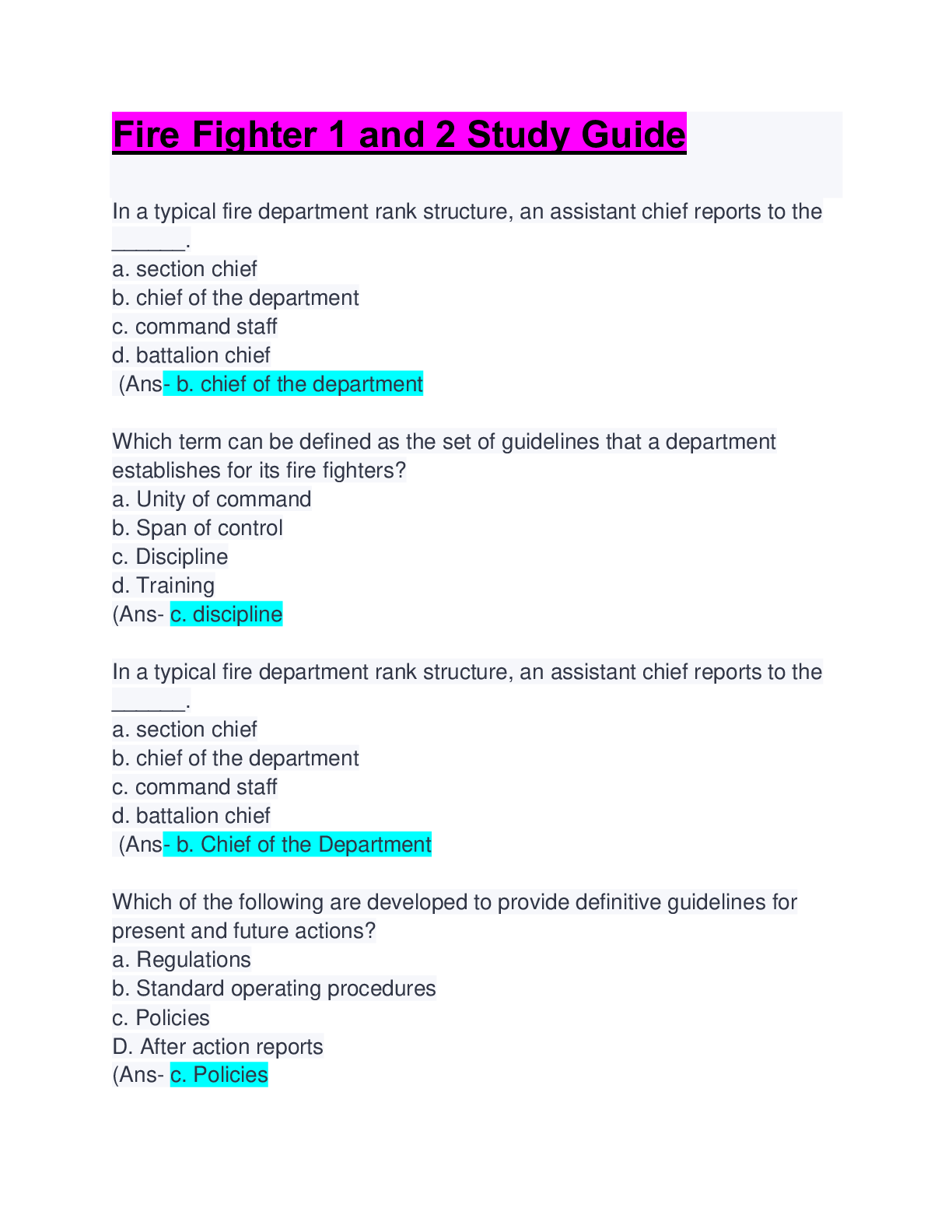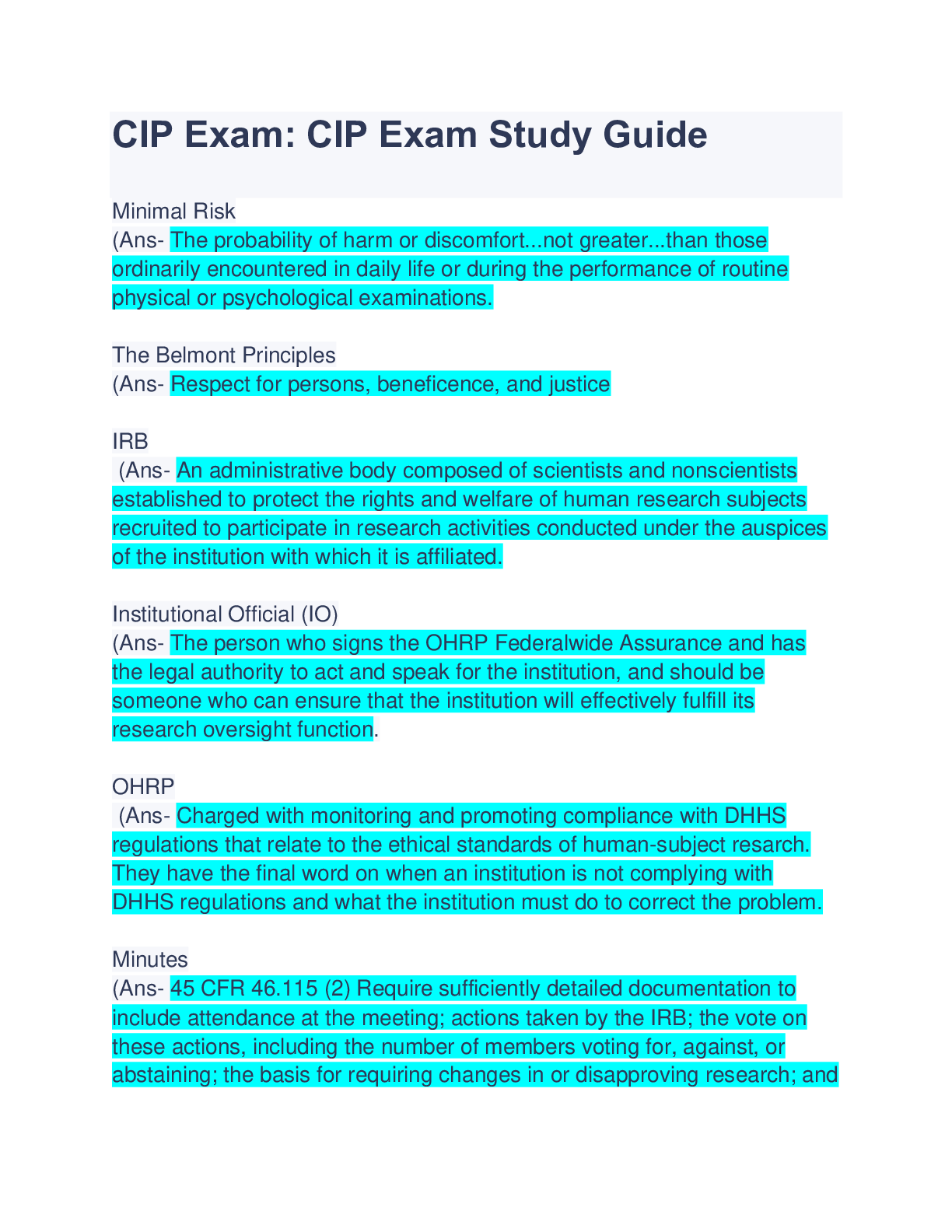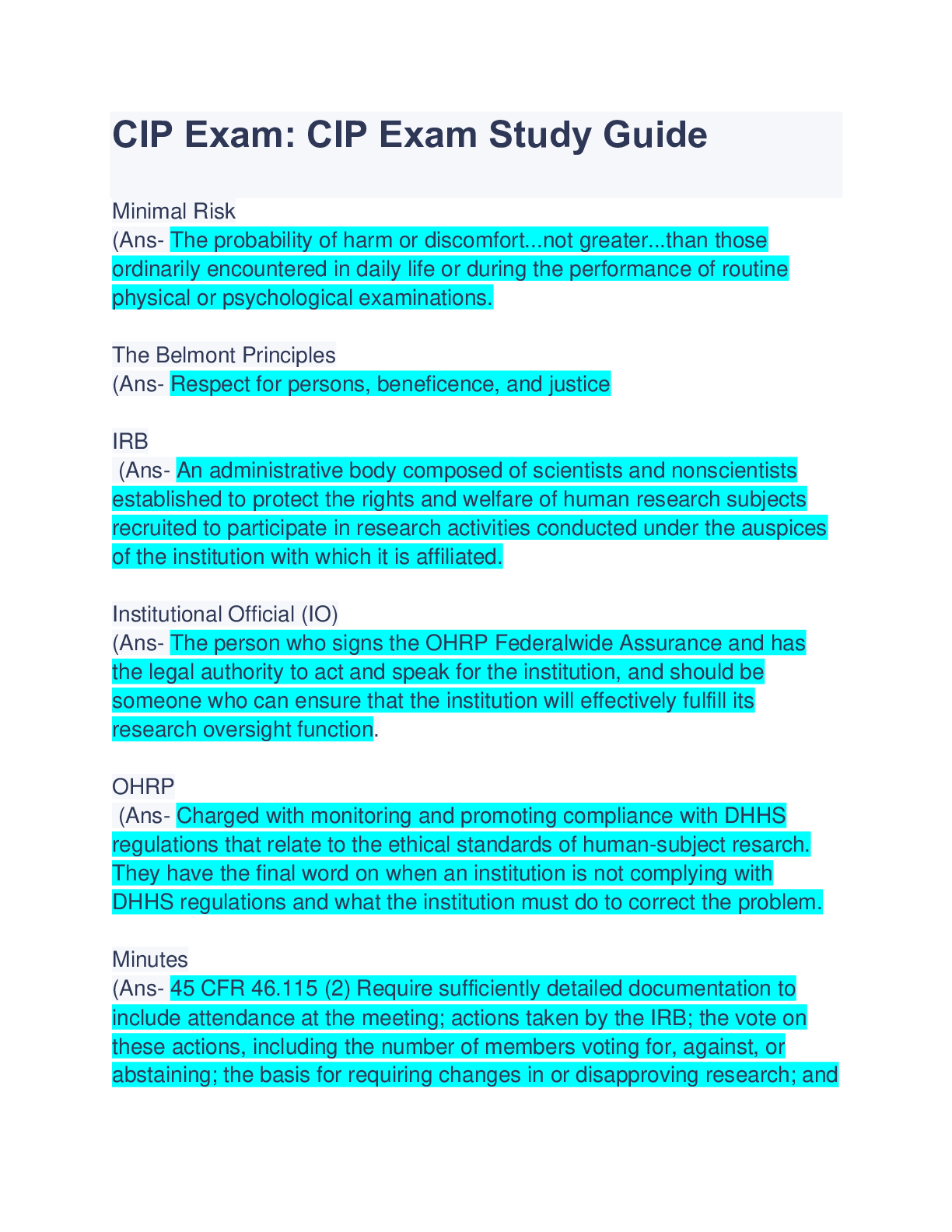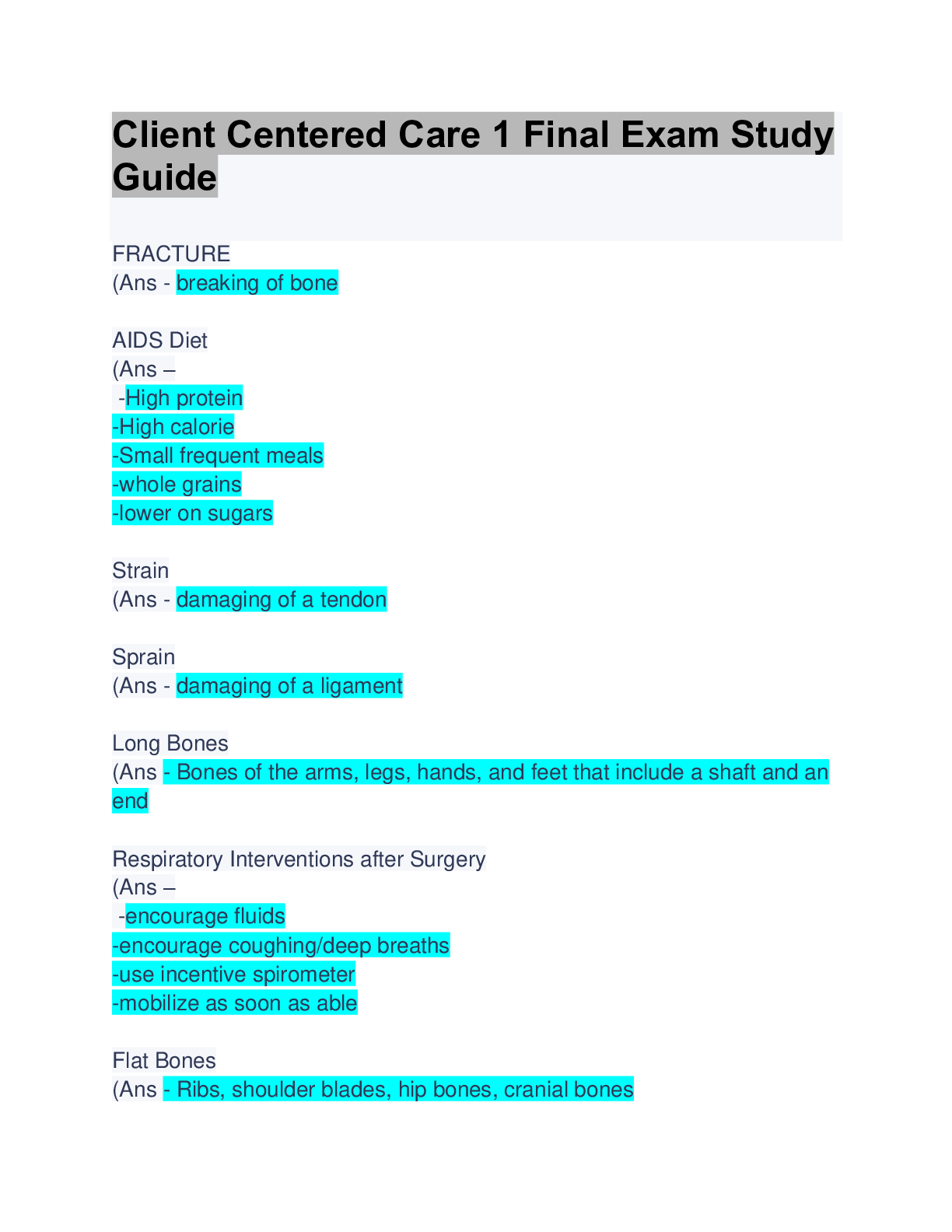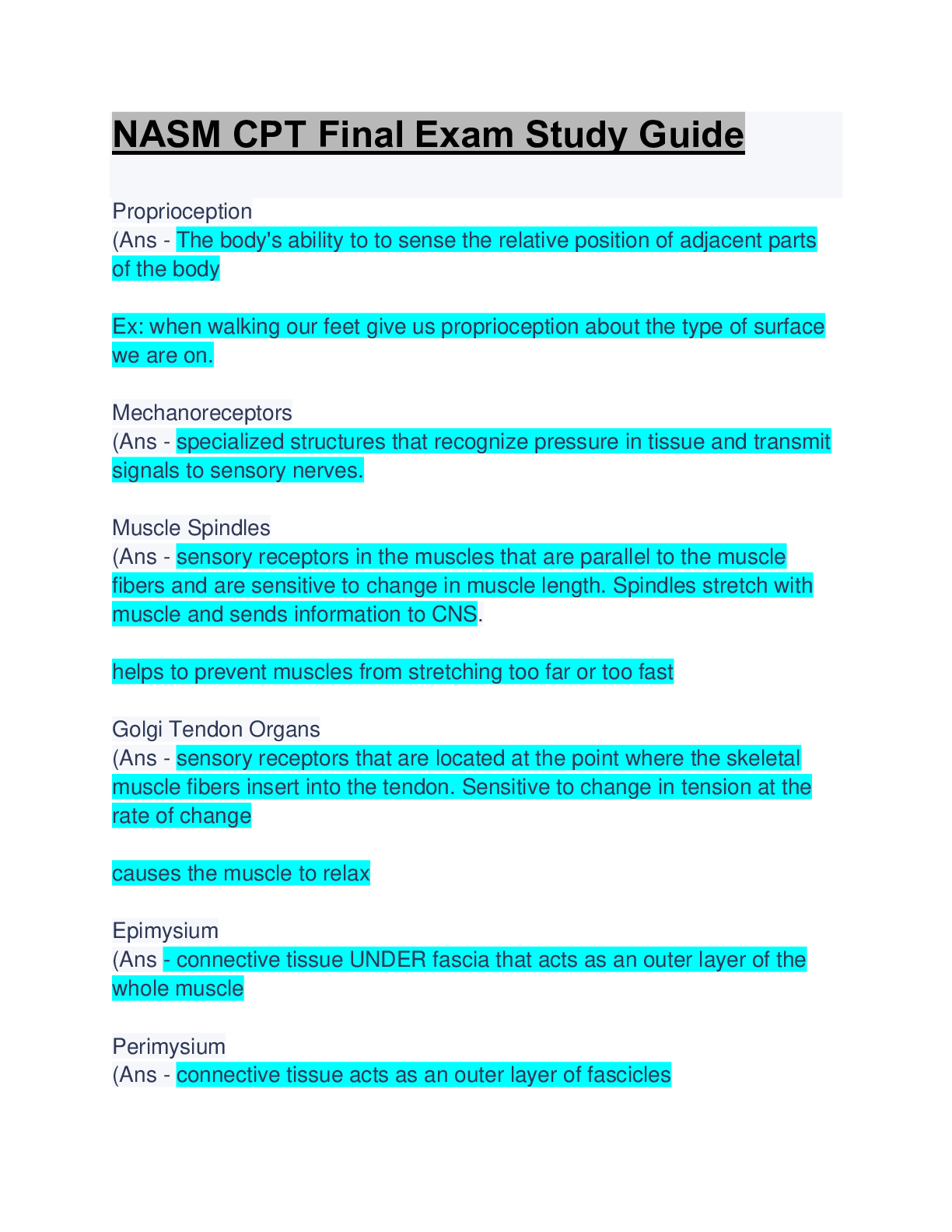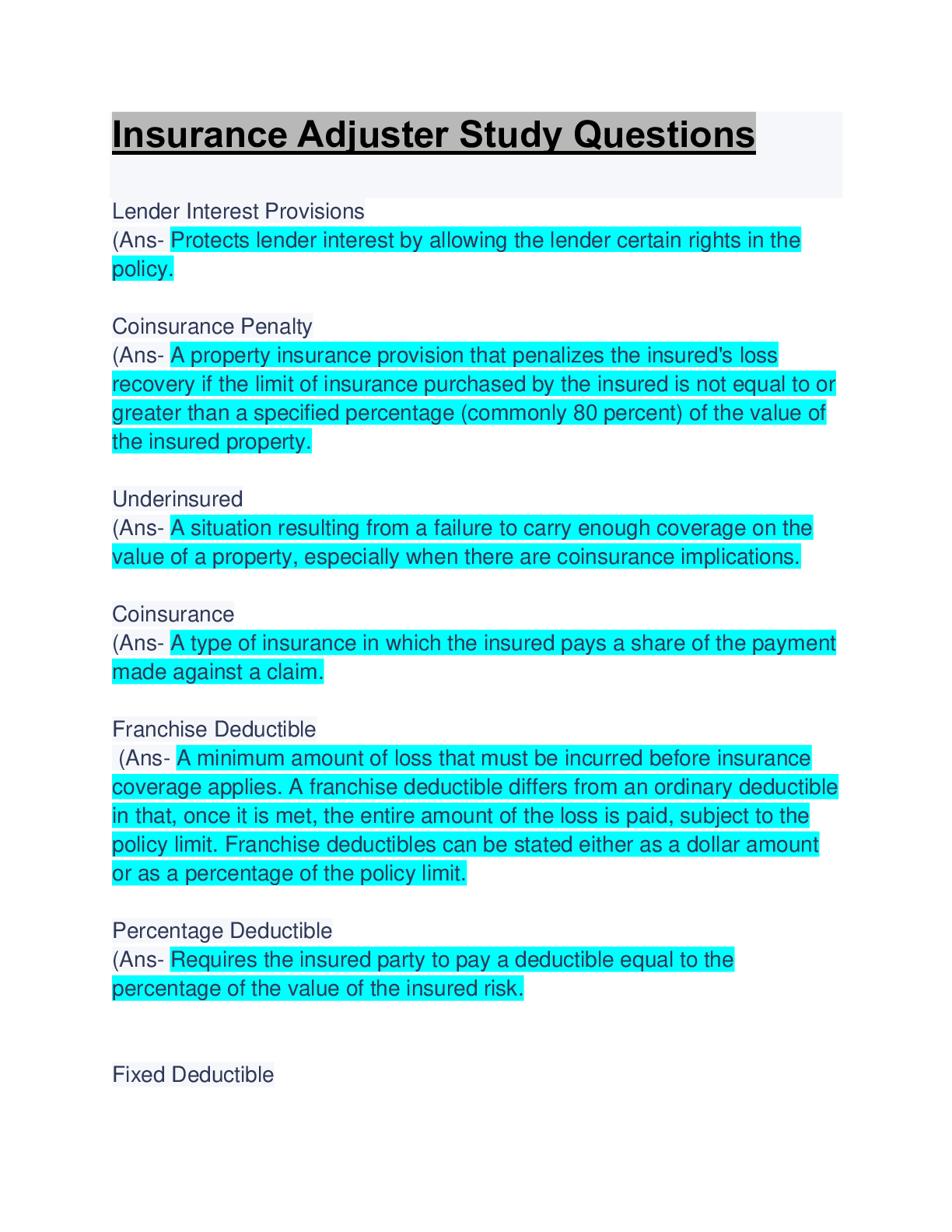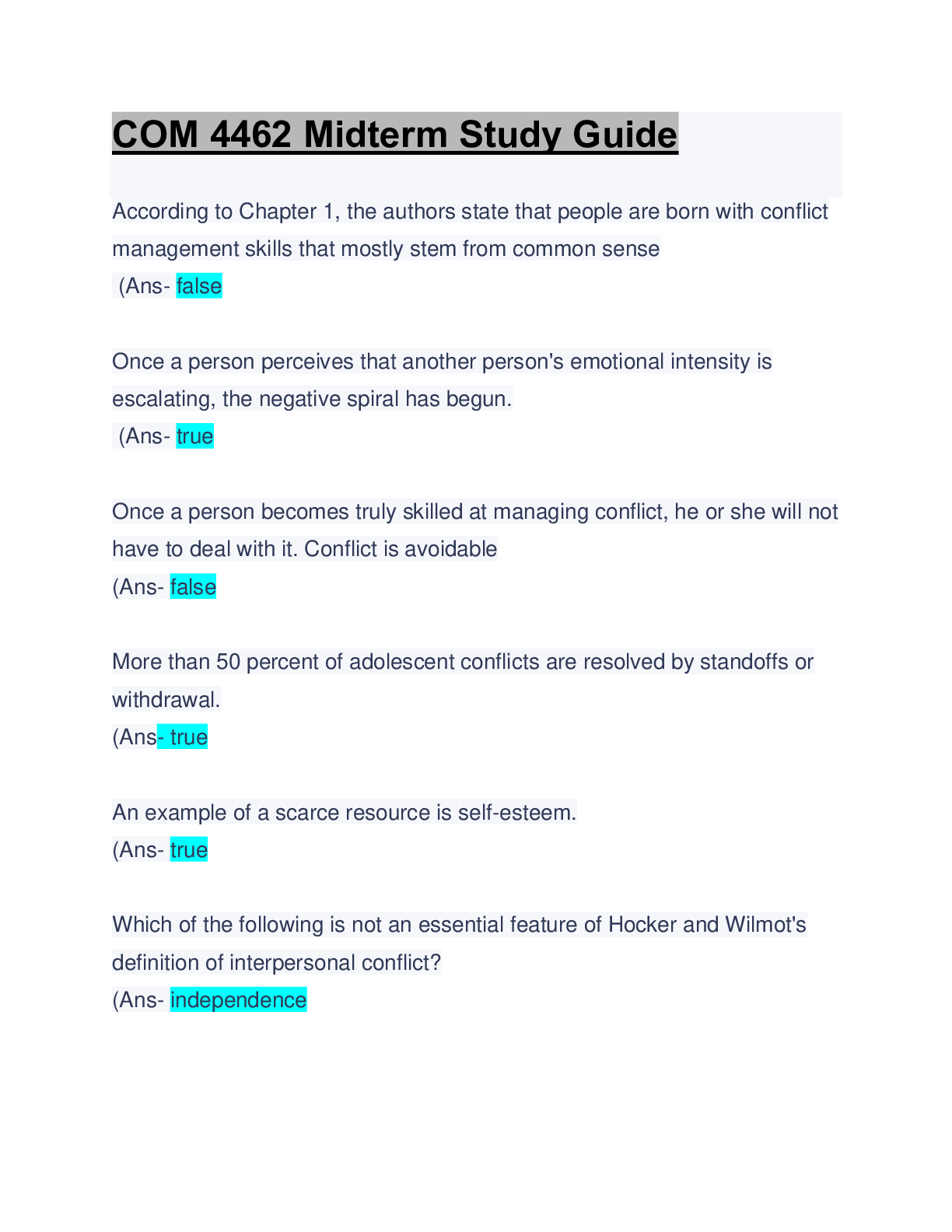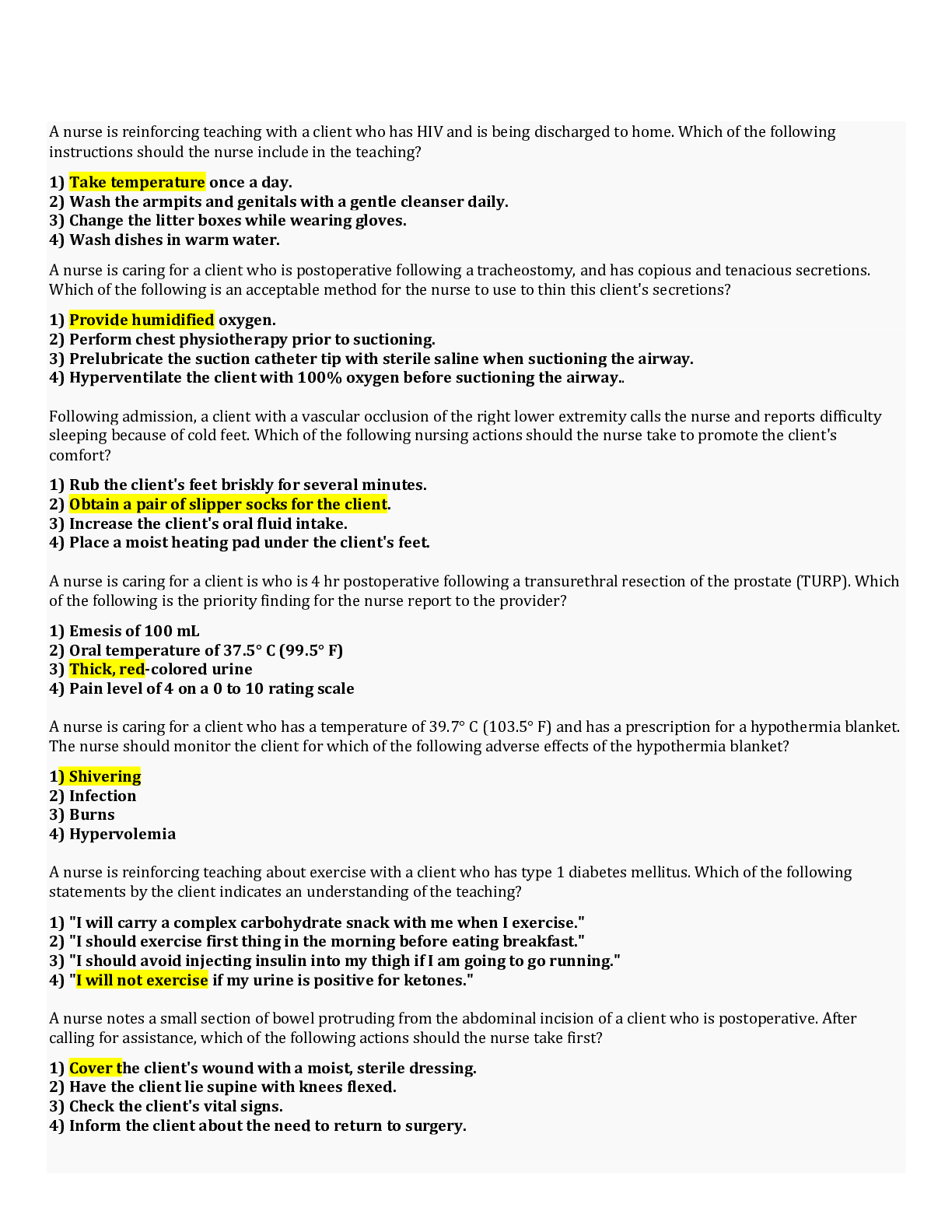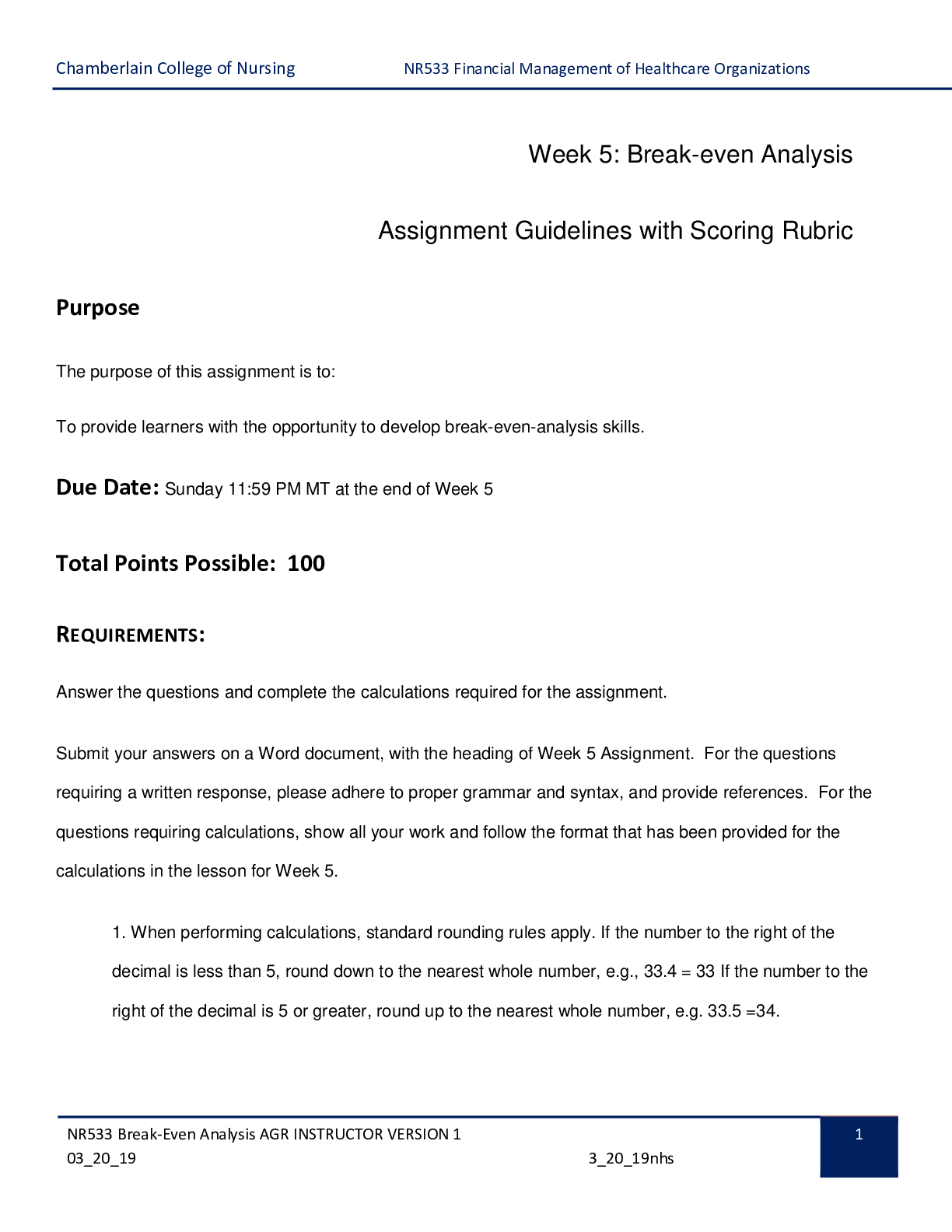Urban Policy and Planning > STUDY GUIDE > Texas Real Estate Exam Study Guide: Updated A+ Score Guide Solution (All)
Texas Real Estate Exam Study Guide: Updated A+ Score Guide Solution
Document Content and Description Below
Broker (Ans- a person who, in exchange for a commission or other valuable consideration or with the expectation of receiving a commission or other valuable consideration, performs for another person... one of the following acts, including helping another person to conduct a real estate transaction TRELA (Ans- The Real Estate License Act (TRELA), a broker is the agent for the buyer or the seller, or in some cases, both parties, in negotiating the sale, purchase, or renting of property. A broker is authorized to operate a real estate brokerage (business). Sales Agent (Ans- is a licensee employed by or associated with a broker, who conducts brokerage activities on behalf of the broker in return for a fee or a commission. They perform real estate transactions under the ultimate supervision of the broker. ESAC (Ans- Education Standard Advisory Committee The function is to regularly review and revise curriculum standards, course content requirements and instructor certification requirements for core and MCE courses. -Committee consists of 12 members -Seven members who have been engaged in the practice of real estate -Four members who are real estate instructors or owners of real estate -One member who represents the public Economic Characteristics of Land (Ans- -Scarcity -Modification -Fixity, and -Situs. Scarcity (Ans- a shortage of land in a given geographical area where there is a great demand for land Modification (Ans- also called improvements, are man-made developments made to real property. Modifications greatly influence land use and value. They can be anything from apartments to airports, schools to sewers, farms to factories. Fixity (Ans- also called investment permanence, means that land, buildings, and other improvements require long periods of time to pay for themselves. This is why an investment in real estate is regarded as a fixed or "sunk" cost. Situs (Ans- or location preference, refers to a location from an economic rather than a geographic standpoint. Residential, commercial, and industrial properties have different location preferences for different reasons. is the reason why house lots on street corners, corner offices, and apartments with commanding views are valued more highly than identically-sized lots in less-preferred locations Nonhomogeneity (Ans- Also known as heterogeneity, nonhomogeneity means that no two parcels of land are exactly alike—because no two parcels of land can occupy the exact same space on the globe. In the United States, there are seven sources of law that affect the ownership and transfer of real estate: (Ans- -United States Constitution -laws passed by the United States Congress -federal regulations adopted by the various agencies and commissions created and authorized by Congress -state constitutions -laws passed by state legislatures -ordinances passed by local governments such as cities, towns, and other jurisdictions -court decisions In 1939, the first regulation for real estate was passed, called (Ans- Texas Real Estate Dealers Act The act was renamed The Real Estate License Act in 1955 The purpose of the US Constitution and the individual state constitutions is (Ans- to establish the rights of the citizens of the United States, and to outline the limits of government. -The Fifth Amendment to the Constitution is particularly applicable to property rights where it guarantees that a citizen will not be deprived of property -The Fourteenth Amendment which was written and adopted to address citizenship of former slaves after the Civil War, also allowed for Congress to pass the federal fair housing legislation under its civil rights protections. The 14th Amendment applies the 5th Amendment guarantees to the states as well as federal law. An ordinance is (Ans- legislation that is passed by a local municipality and binding on the citizens of that municipality. As they say with a variety of policies, 'all real estate is local. Here are some sample zoning ordinances from around the state of Texas: City of Dallas City of Austin City of El Paso City of Waco City of Brownsville City of Houston Legal Remedies (Courts of Law) vs. Equitable Remedies (Courts of Equity) (Ans- Because some remedies in common law were considered too harsh, courts of equity were created to provide relief to applicants under equitable principles equity has the ability or flexibility to do what is considered fair and equal, even when the letter of the law would dictate otherwise. Federal bankruptcy courts traditionally operated as courts of equity. [Show More]
Last updated: 1 year ago
Preview 1 out of 93 pages
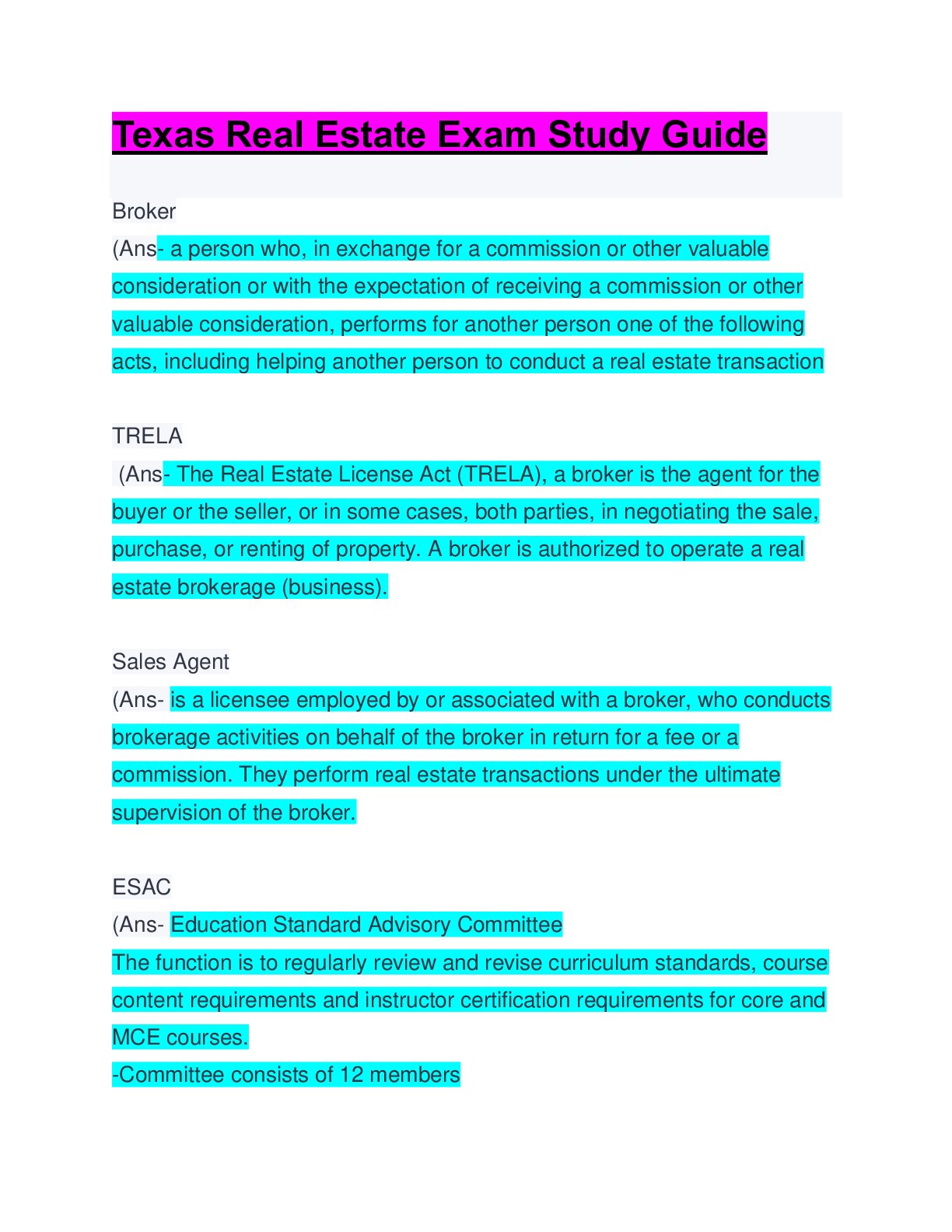
Reviews( 0 )
Document information
Connected school, study & course
About the document
Uploaded On
Mar 07, 2023
Number of pages
93
Written in
Additional information
This document has been written for:
Uploaded
Mar 07, 2023
Downloads
0
Views
65
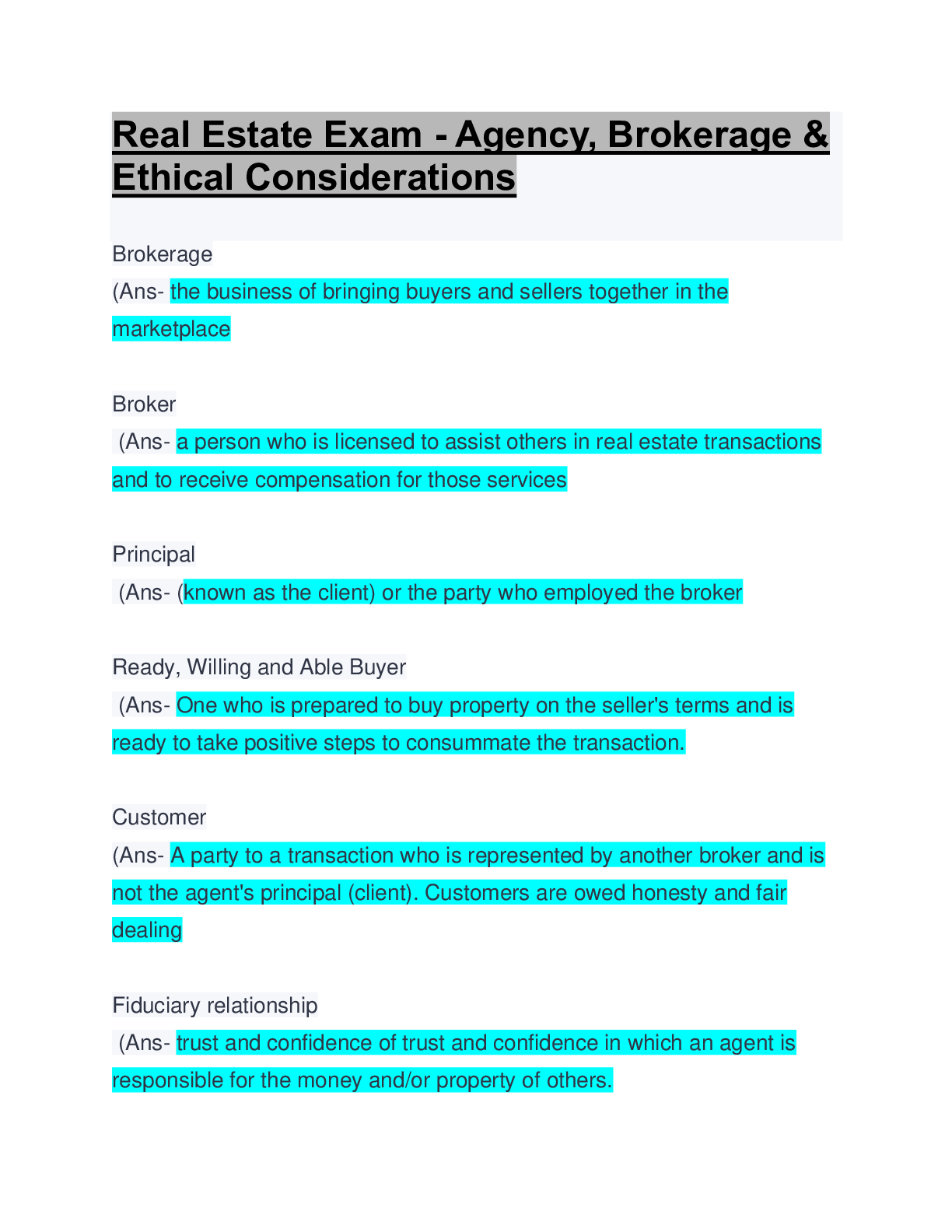

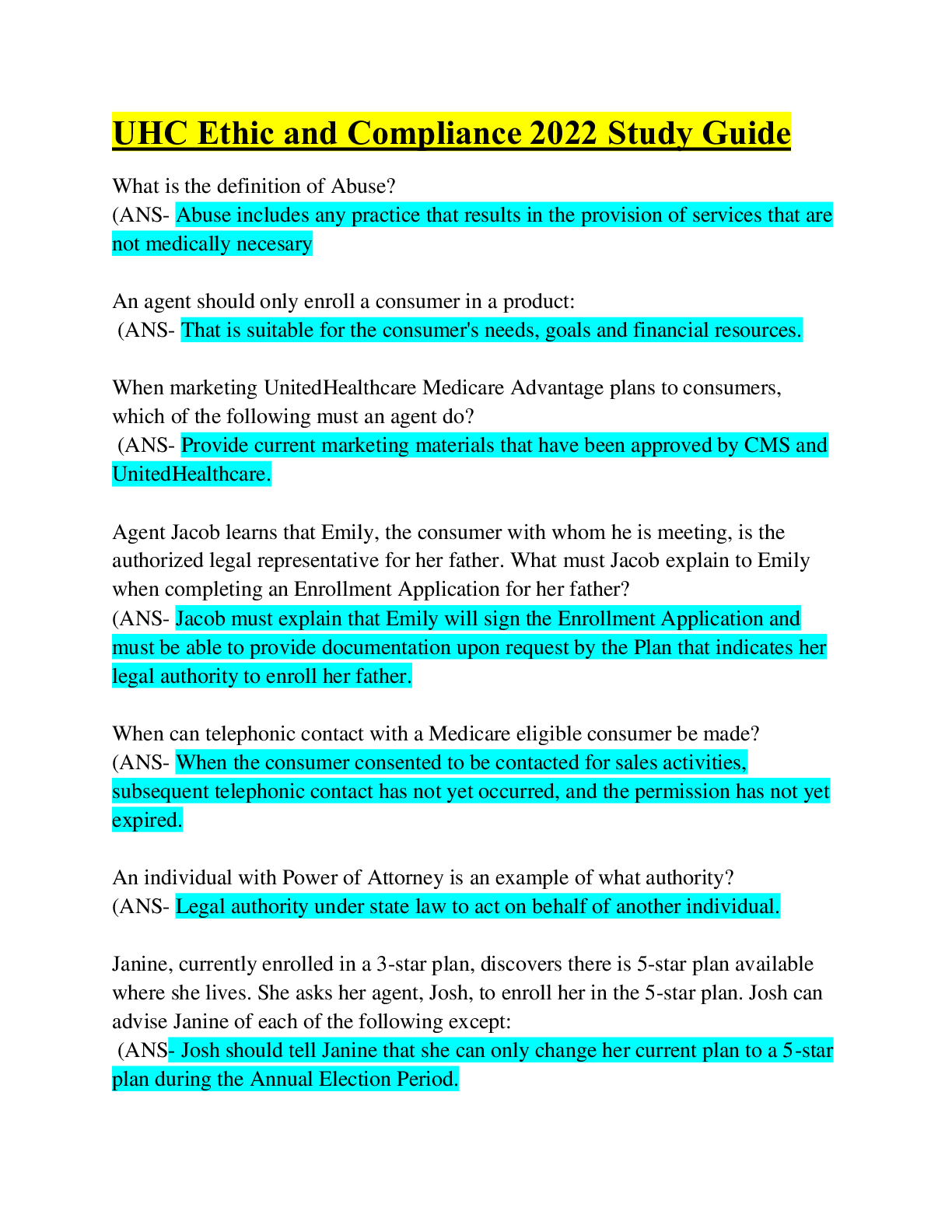
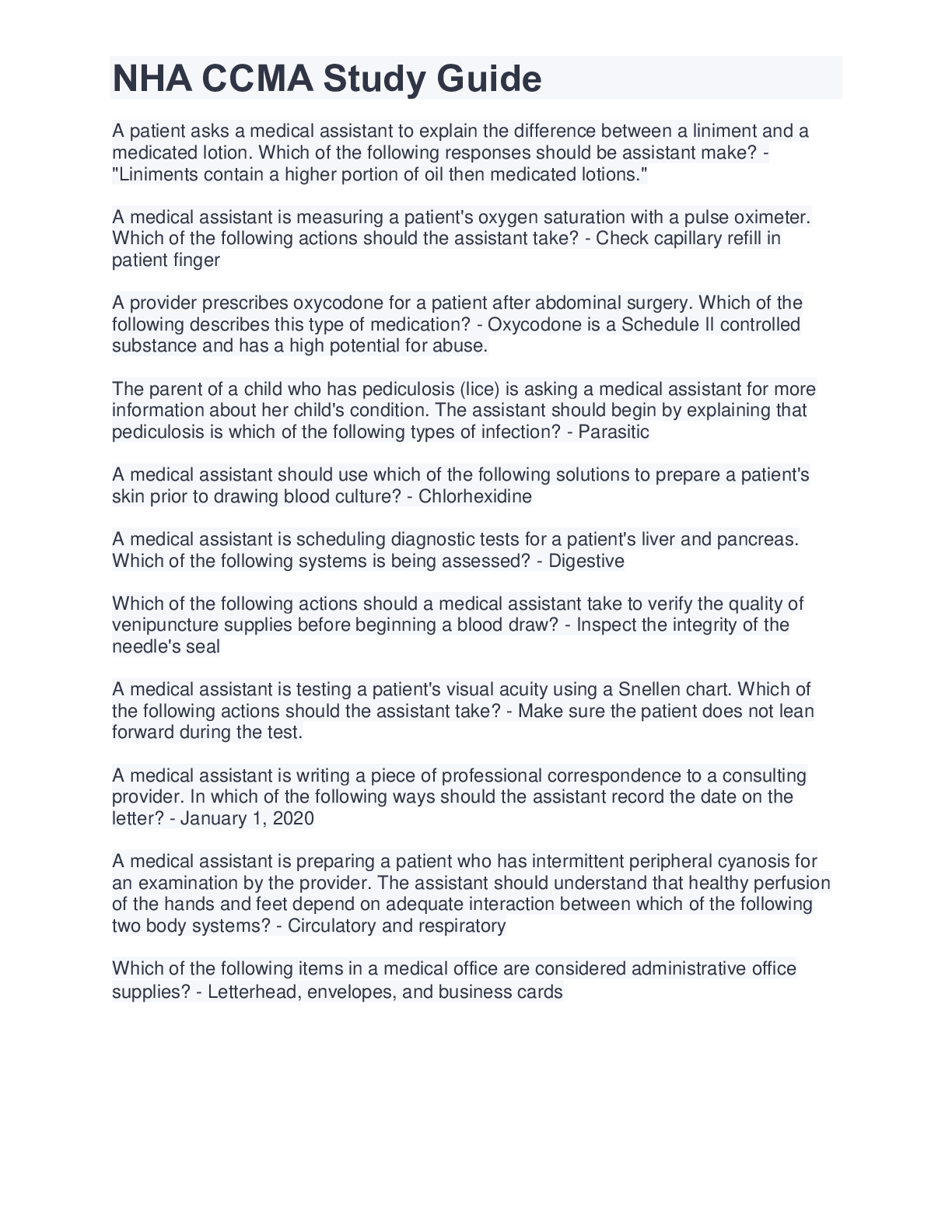
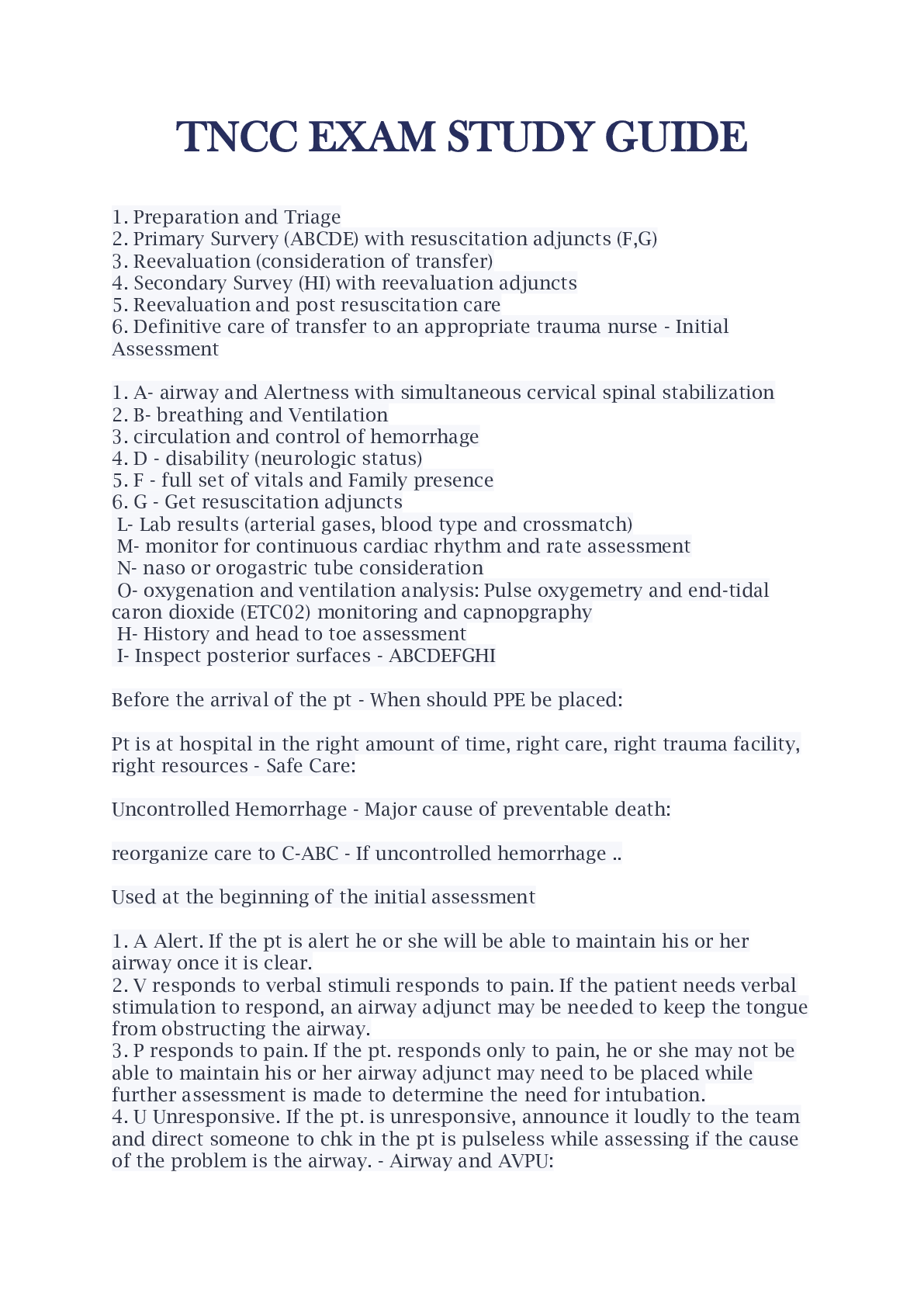

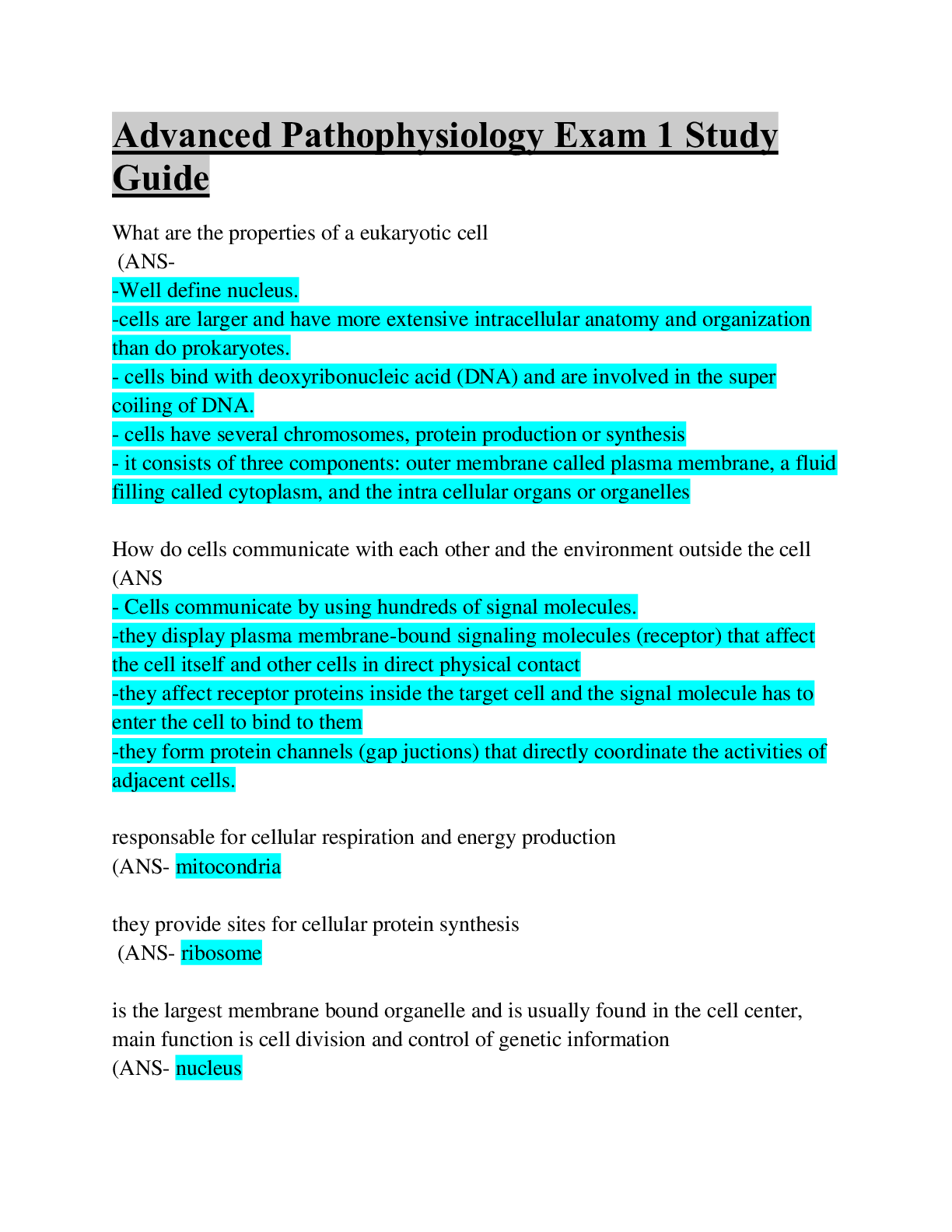
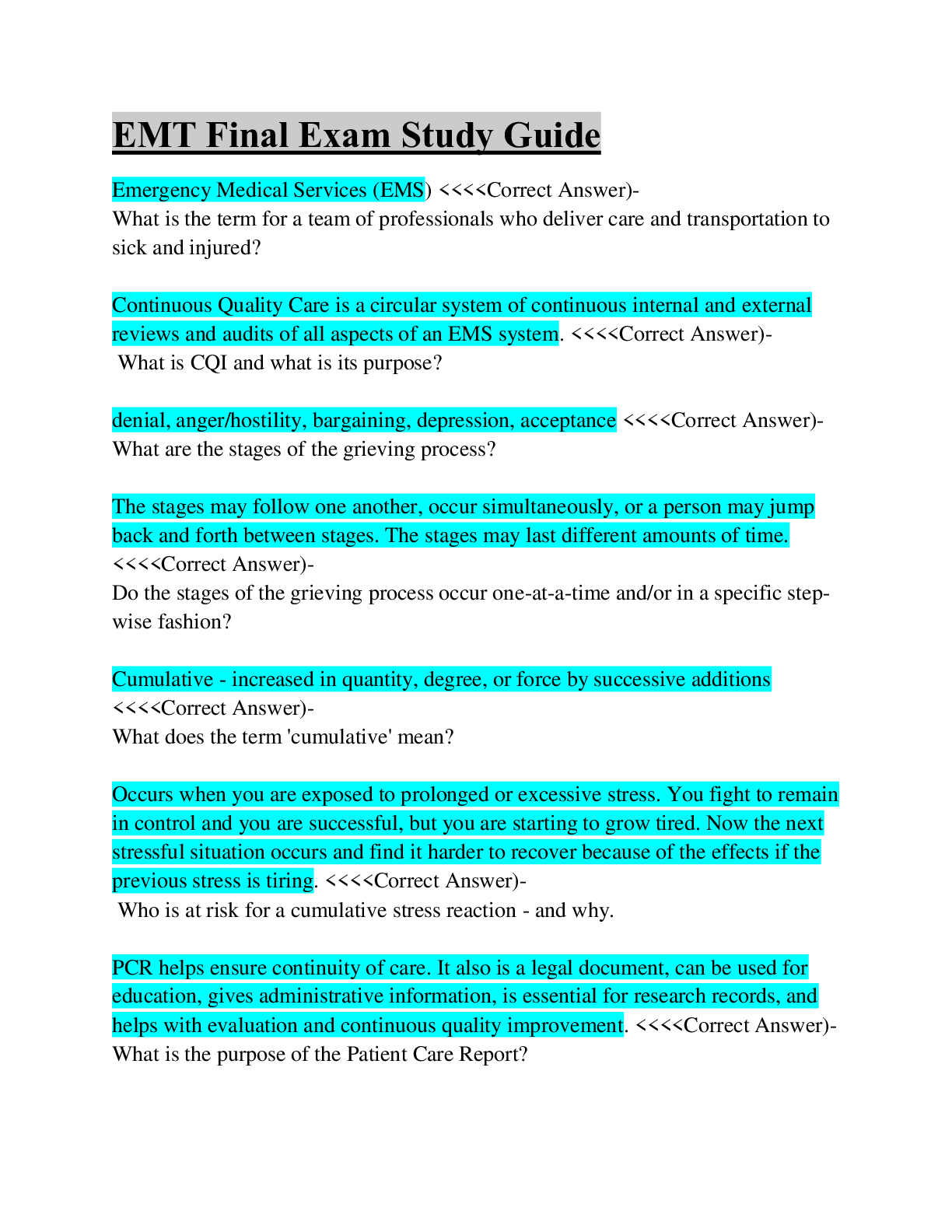
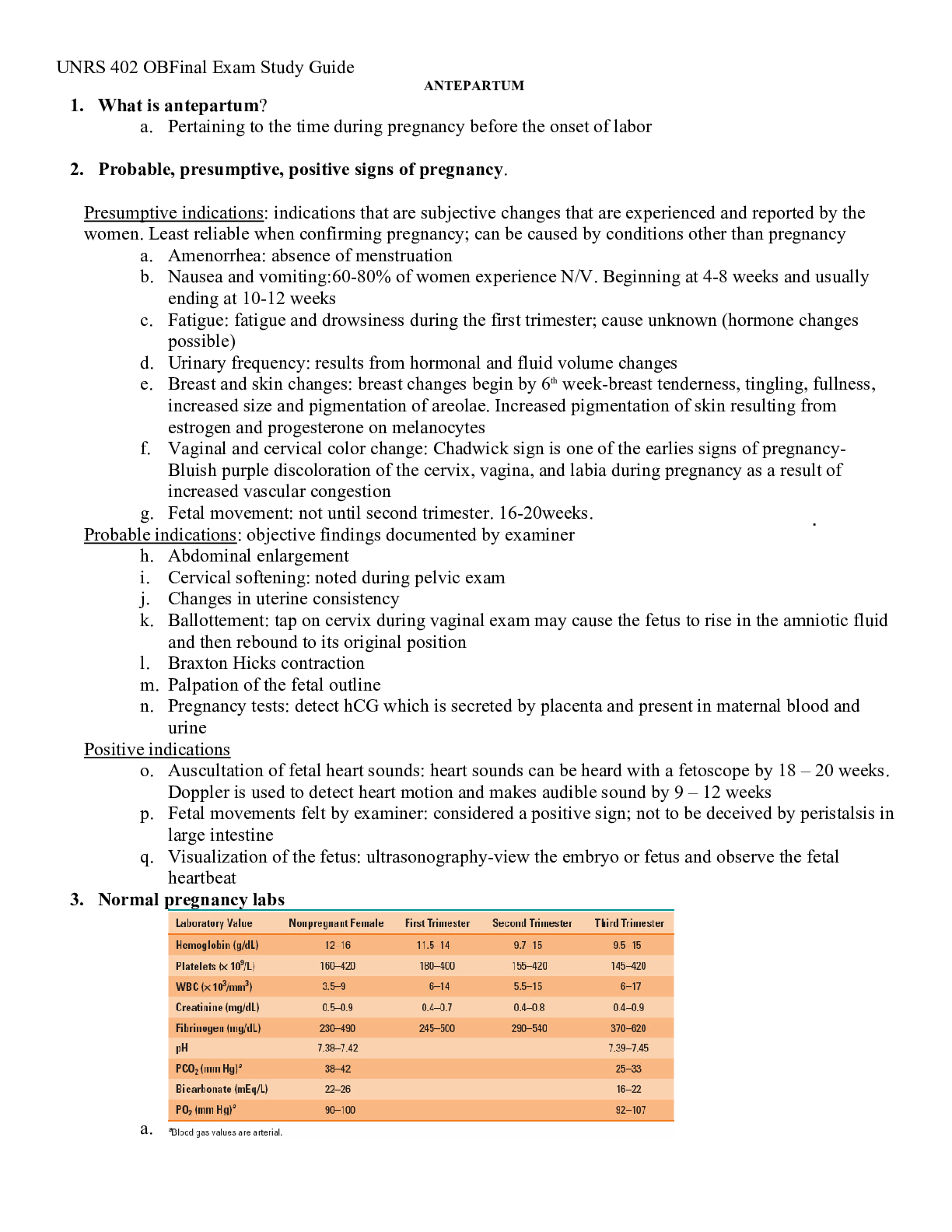
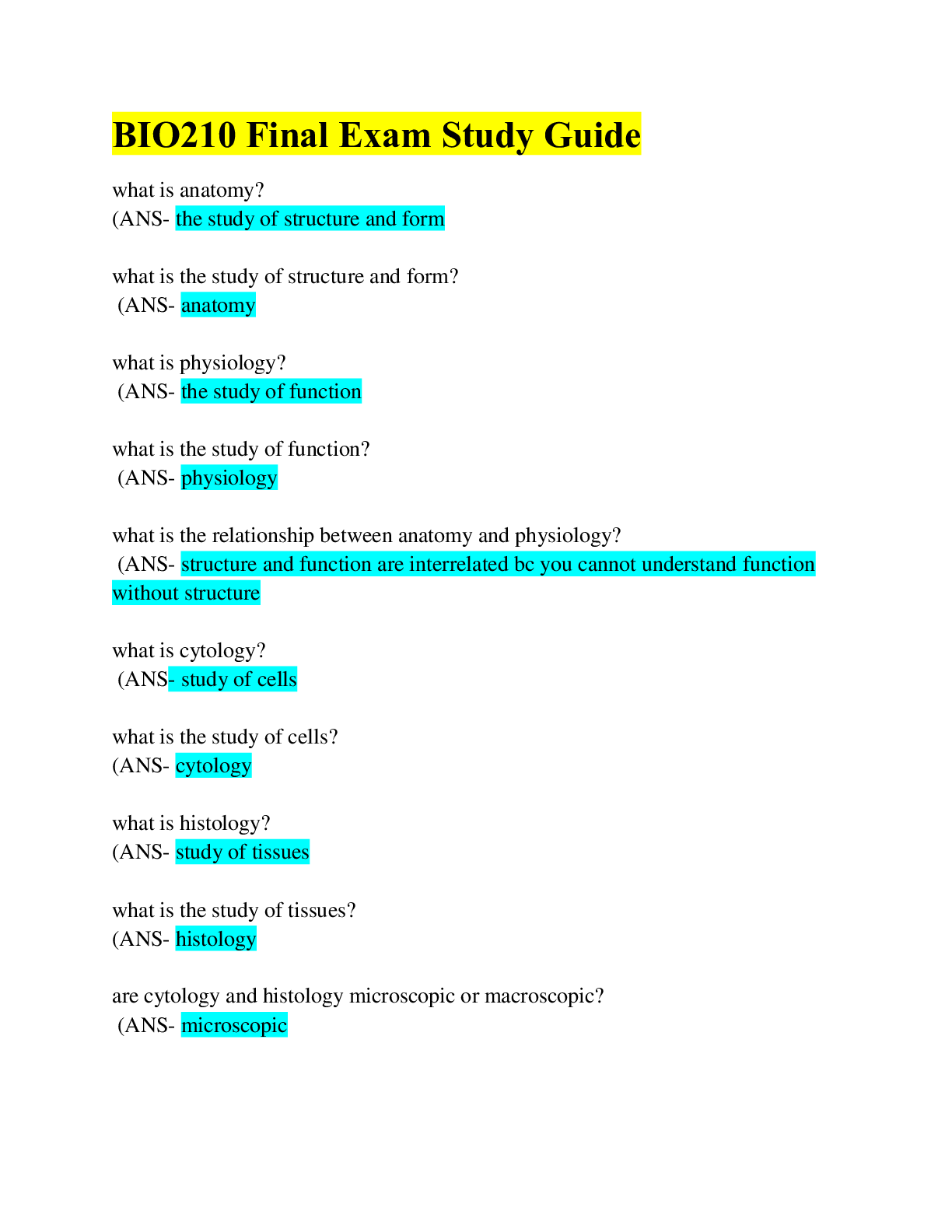
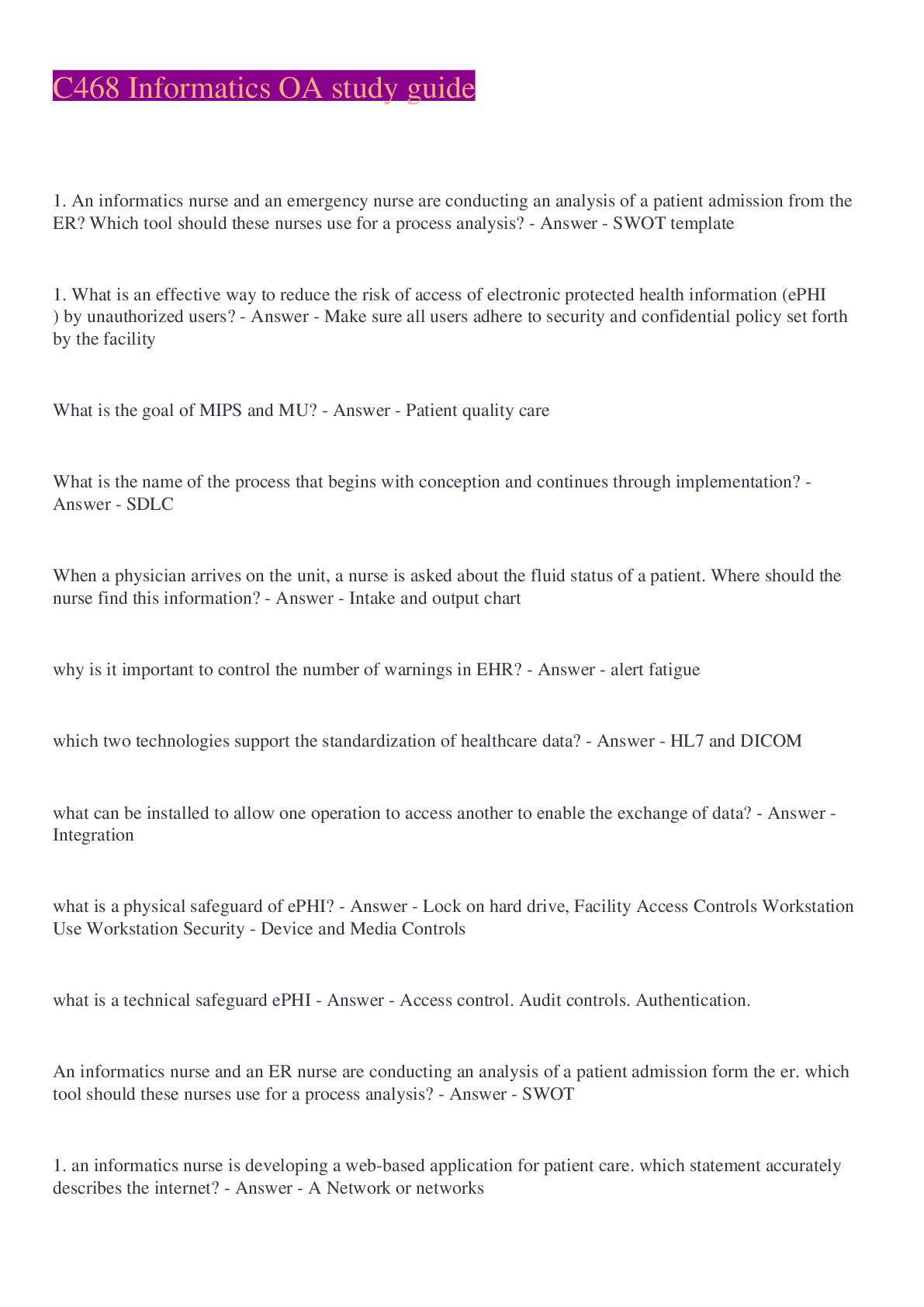

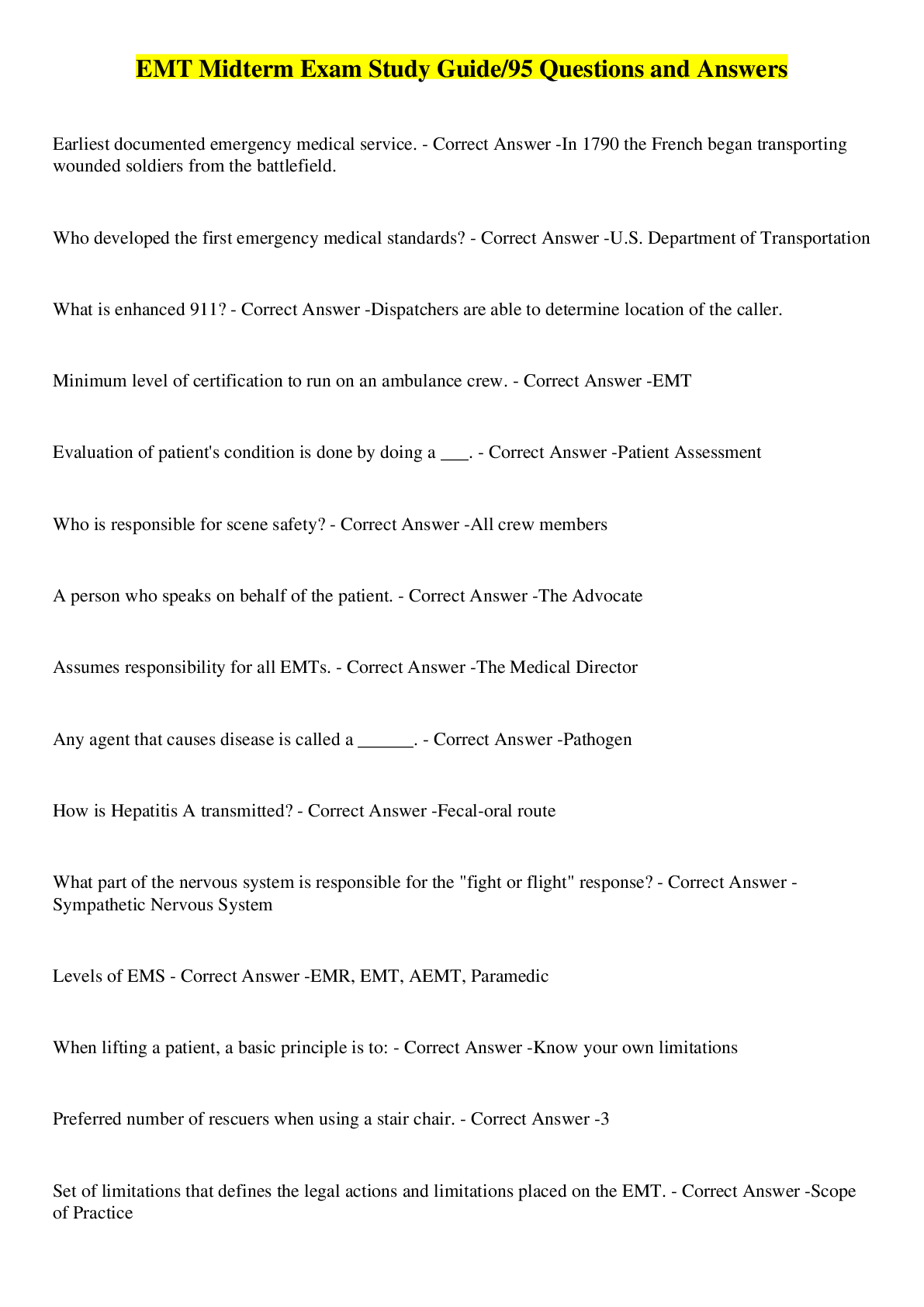
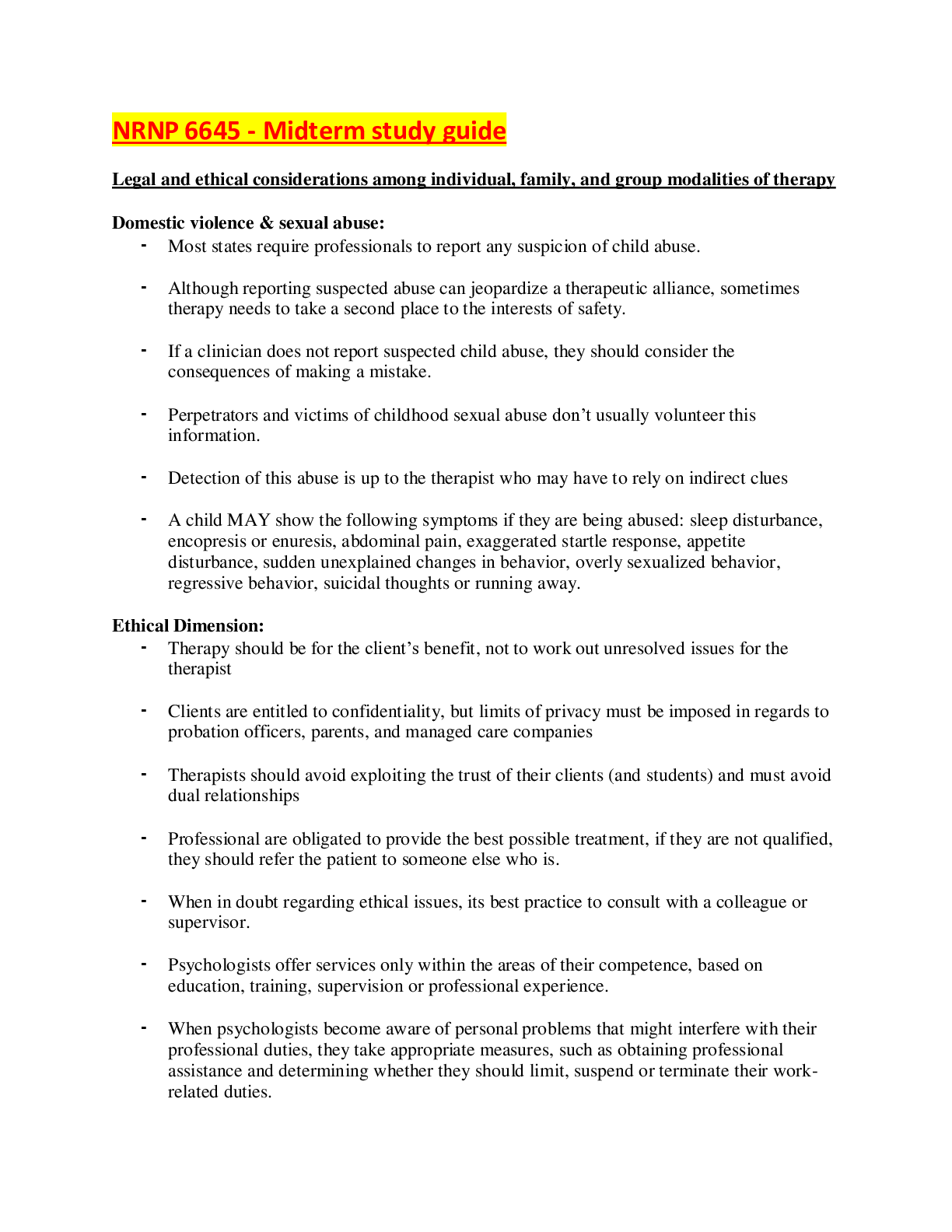

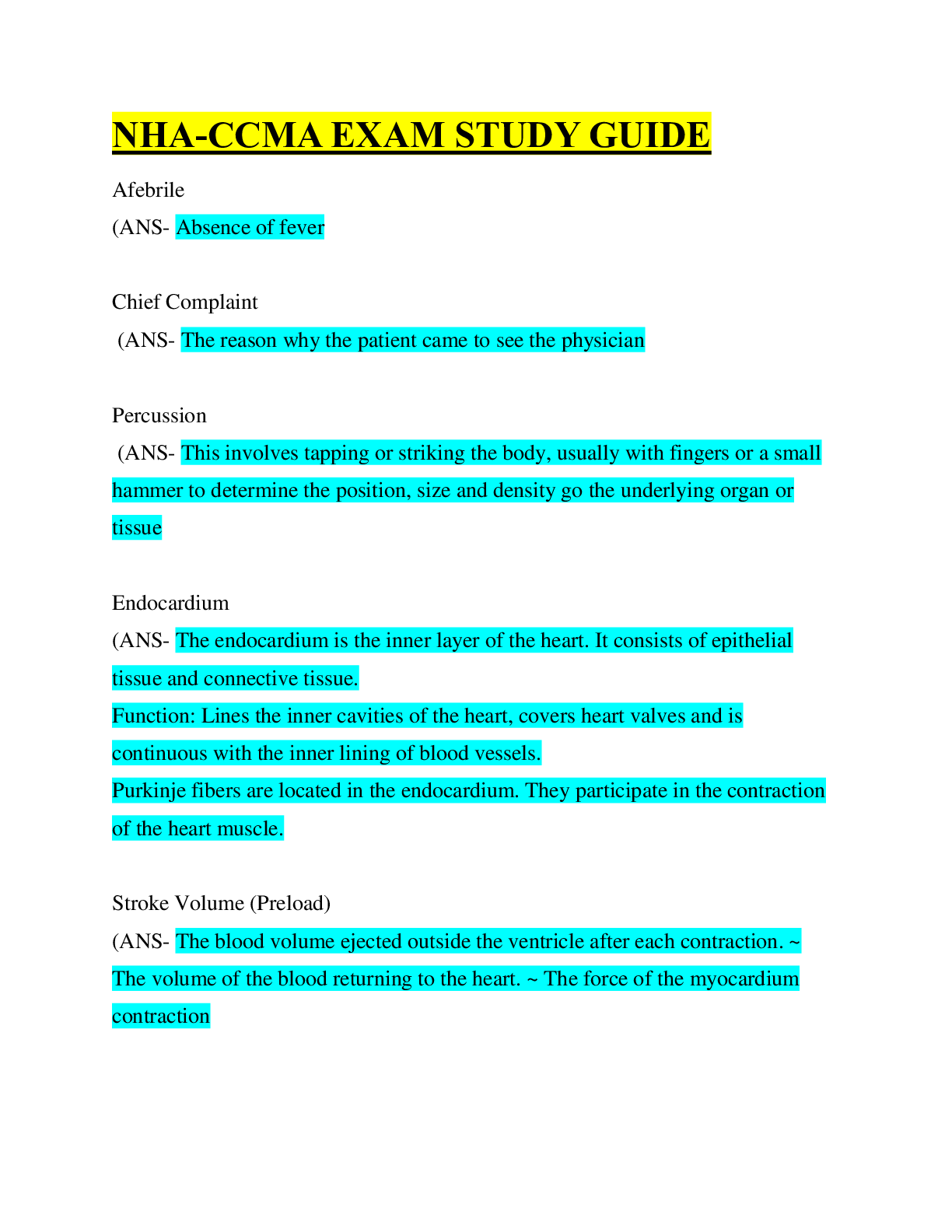
 Study Guide.png)
 Exam Study Guide.png)
